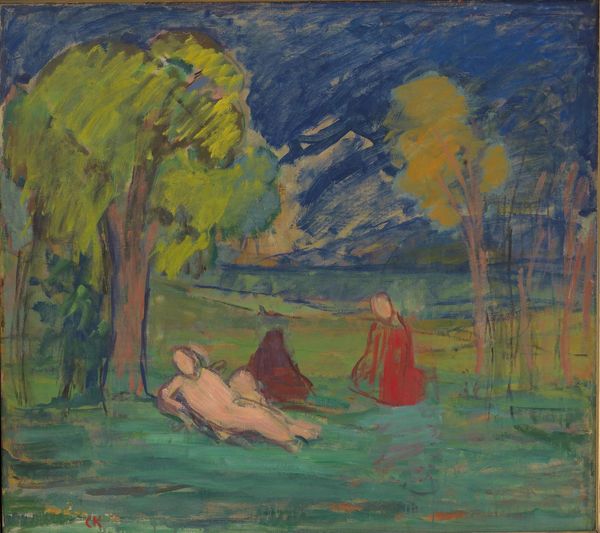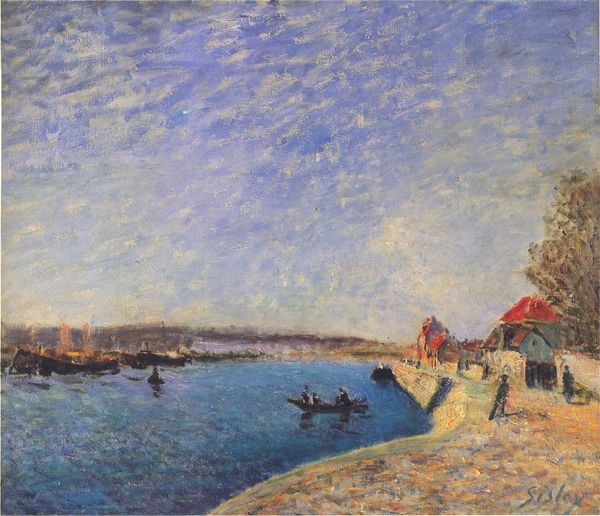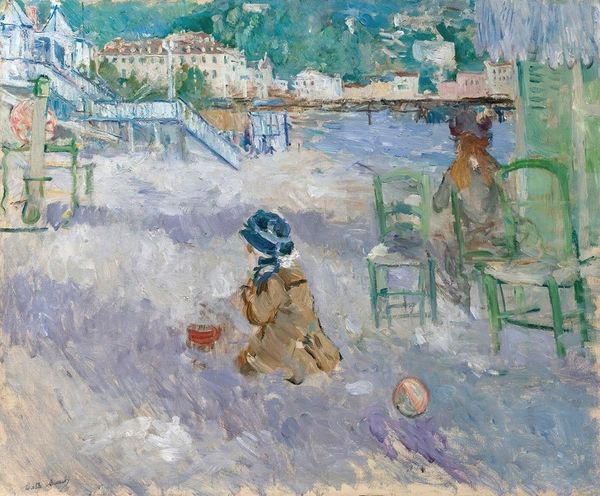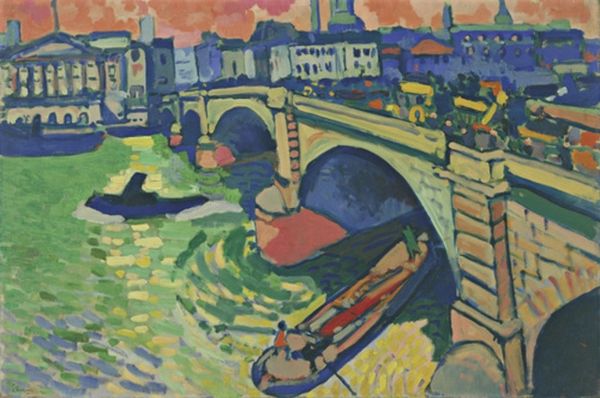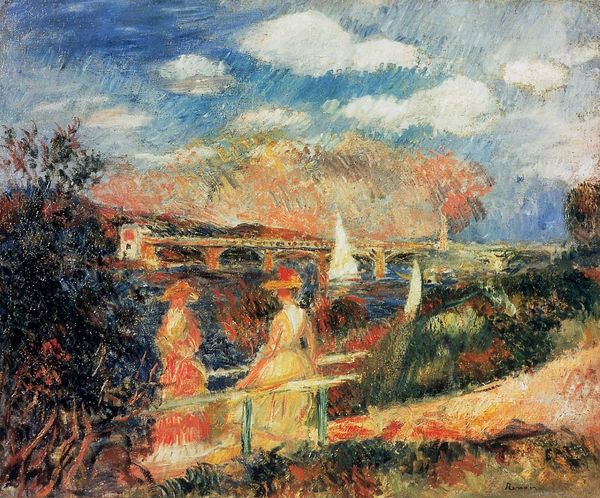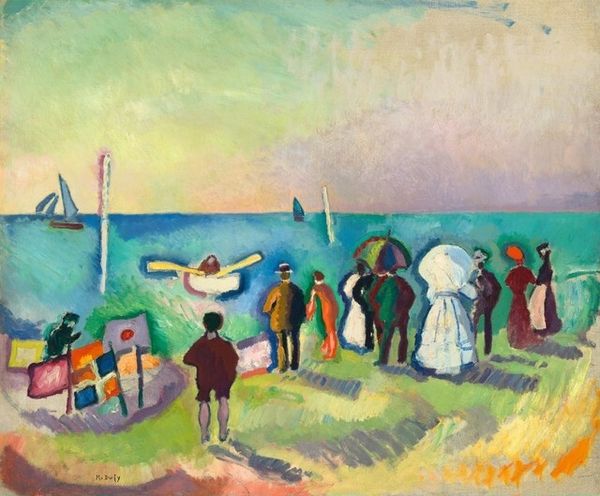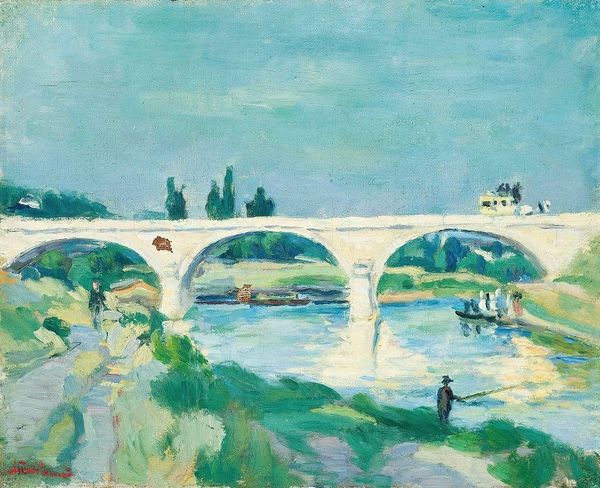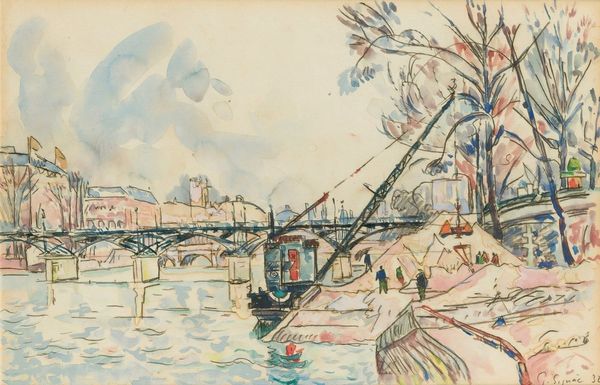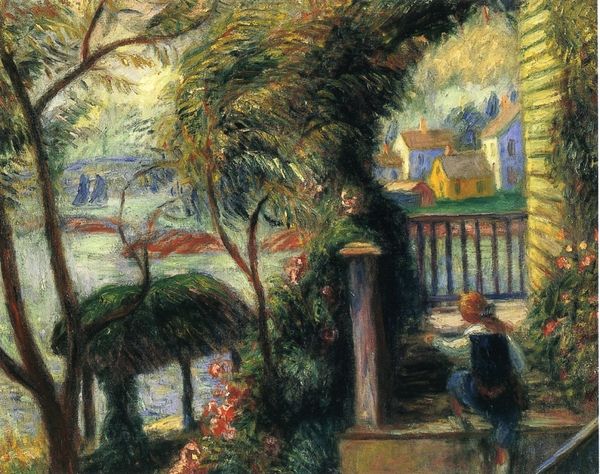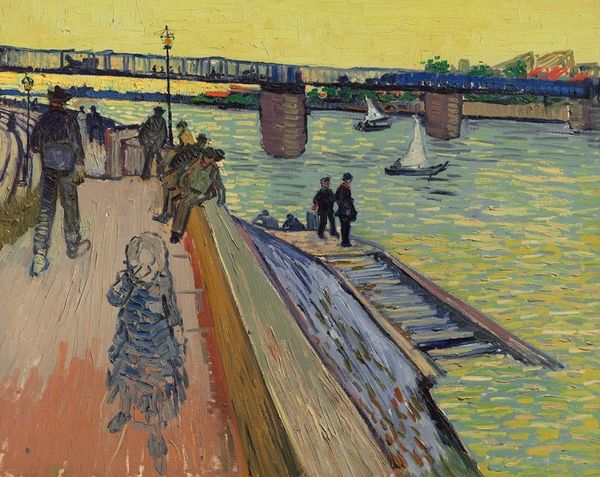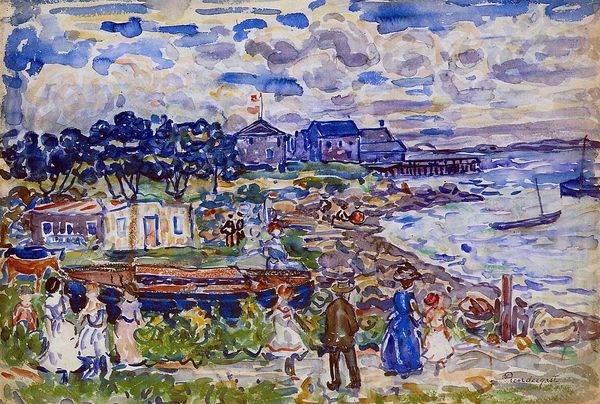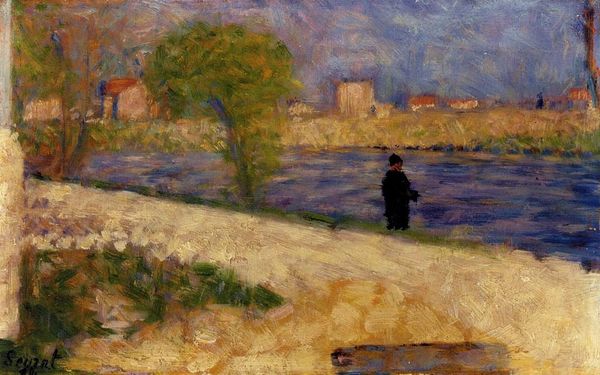
oil-paint
#
narrative-art
#
oil-paint
#
landscape
#
figuration
#
oil painting
#
expressionism
#
cityscape
#
watercolor
Copyright: Modern Artists: Artvee
Curator: This is Marc Chagall’s "Bord de fleuve," painted circa 1930. Look at how dreamlike the scene is. What strikes you first? Editor: The overriding sense of muted, cool-toned materials. Primarily, oil paint. This impacts the subdued, serene mood and gives everything a slightly distanced feel. Curator: The riverbank city scene certainly seems still, doesn't it? Yet there are these other figures interrupting the grounded landscape with floating weddings and reclining lovers. These can be read through lenses of cultural and religious traditions from his background in Belarus, later positioned through the experiences of displacement and the anxieties that come from interwar Europe. What does it reveal about his sense of belonging? Editor: Right, the placement and the medium speaks to all this as well: Oil allows for a translucence, allowing him to integrate both realistic settings along with fantastical floating characters, underscoring tension in production—this juxtaposition can speak to anxieties surrounding war. It’s almost as if the making of the art is mirroring anxieties he held towards a displaced, war-torn landscape and cultural erasure. Curator: Exactly. And, that act of erasure continued to repeat through history, marking the identities of many people through the war, and as refugees today. Look closely at the bodies rendered on canvas; do we have the words to protect them as well? Editor: It raises interesting questions of labor too – whose labor is rendered and how are their stories intertwined, from painter to art handler. Perhaps an interrogation into the canvas weave could shed further light... Curator: Absolutely, there's an ethical demand placed on us as viewers when faced with a painting so directly linked to cultural loss and historical anxiety. "Bord de fleuve" reminds us to look carefully at who and what has been painted, whose labor helped produce its image, but also what historical context they are tied into so that we may ask meaningful questions. Editor: And also consider how such labor relates to modes of consumption - who views and consumes the artwork to create and reproduce narratives? Always vital to bring awareness. Curator: These types of critical questions serve as a bridge for us. Art asks us to remember to honor those on either side, and everything in between. Editor: Indeed. Material and technique inform but so do all the interwoven people who brought it all to this very moment!
Comments
No comments
Be the first to comment and join the conversation on the ultimate creative platform.

